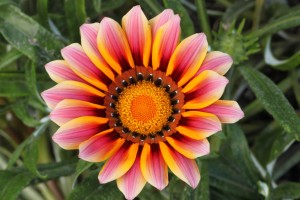Jungian Psychology and Andean Medicine: Coming Full Circle
Friday, July 11th, 2014
 Awhile back, I began writing about integrating Jungian Depth Psychology with traditional Andean medicine[1] through the lens of a Jungian analyst and shaman (Andean medicine people use the term paqo which I will also use in this article). I wanted to find a way to unify these two different but important areas of my life together in some sort of cohesive framework.
Awhile back, I began writing about integrating Jungian Depth Psychology with traditional Andean medicine[1] through the lens of a Jungian analyst and shaman (Andean medicine people use the term paqo which I will also use in this article). I wanted to find a way to unify these two different but important areas of my life together in some sort of cohesive framework.
Jung wrote, “There is no consciousness without discrimination of opposites.”[2] Although I found similarities between Depth psychology and Andean medicine, I was able to pinpoint what I considered to be some significant distinctions. I decided that these discrepancies were because the practice of Andean medicine is a somatic experience that happens through energetic connection with the natural world. I viewed the inner journey of individuation as intrapsychic process of connecting with archetypal energy through imagery and symbolism.
From an Andean paqo’s perspective, symbolic imagery is not necessary for spiritual transformation to occur because a paqo accesses energetic life force directly in their body – primarily through the energy centers of the Belly, the Heart, and the third eye in the Mind.[3]
At the time, I wrote the following passage,
One of the ways shamanism differs from Jungian Psychology is that it is a “bottom up” approach. Growing up in a village, or ayllu, paqos learn to rely on their hearts and bellies rather than their brains to make sense of the world and find connection with Pachamama (Mother Earth). For p’aqos, the energy centers of the Heart and the Belly are equally important – perhaps opening the door for even a strong connection experience than the energy center of the Mind. Working with all three energy centers provides paqos with a deeper and broader range of perception.
Trying to understand everything using our logical mind is not necessary. It can even hinder our growth because we miss things. Things exist in the natural and spiritual world that cannot be understood using reason. As Westerners, we sometimes “throw the baby out with the bath water” when we count on our logical minds to determine what is real. The medicine people believe that thinking about something brings separation while a heart-centered focus of kausay brings connection. Paqos believe that feeling connected through the heart and belly leads to truth.
Paqos rely on the energy body, as the primary mechanism for integrating numinous experience – not the ego. Although energy is felt as a somatic body state, it is different from the subtle body that Jung described. This is because it exists as an aspect of a collective energetic connection, with kausay pacha (the collective middle world that we live in), and is not only a relationship between the individual psyche and soma.
I concluded that Jungian psychology differed from Inca shamanism in the following ways: 1) In Jungian psychology, numinous experience is integrated as an ego function through connecting with the Self through the ego/Self axis, verses as a somatic experience processed in the energetic body; 2) In Jungian psychology, emphasis is placed on individual rather than collective experience in the community; 3) Shamanism is primarily experienced in the Heart and Belly, rather than with the Mind; 4) Shamanism is a practice that occurs in direct relationship with nature.
[1] The term medicine is synonymous with healing for Andean paqos.
[2] “Psychological aspects of the mother archetype,” CW 9i, par 178.
[3] I will capitalize Belly, Heart, and Mind to refer to the respective energy centers in these locations.
No Comments Yet
You can be the first to comment!
Leave a comment